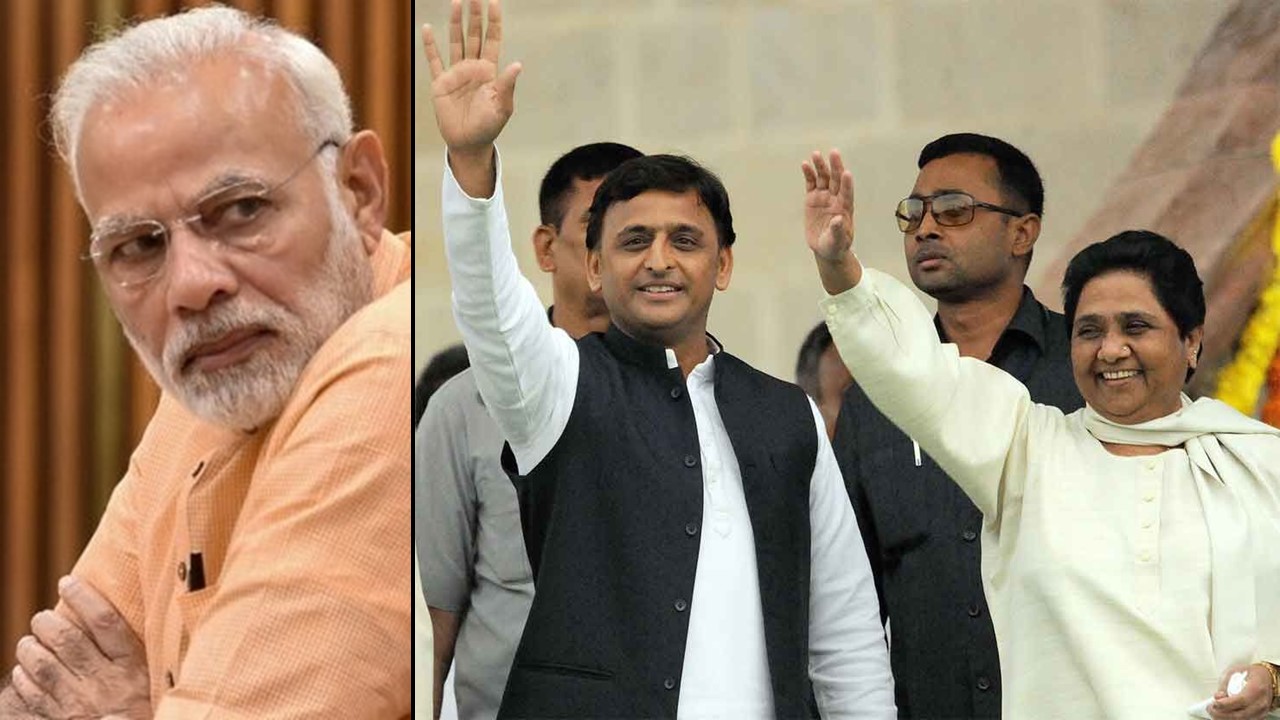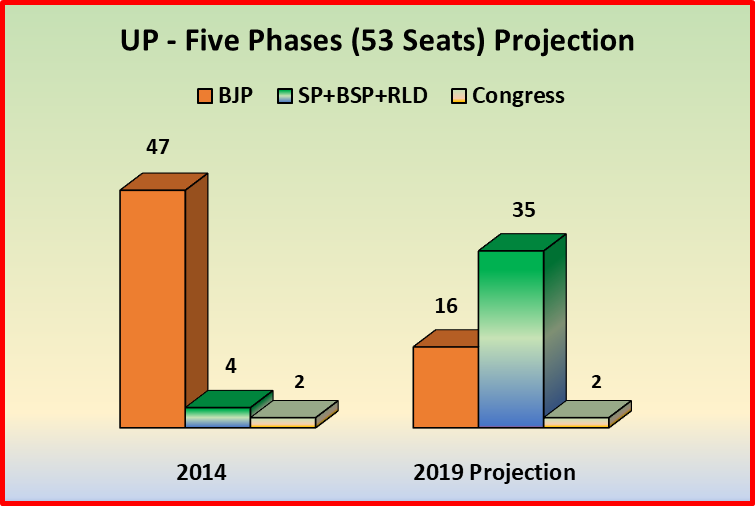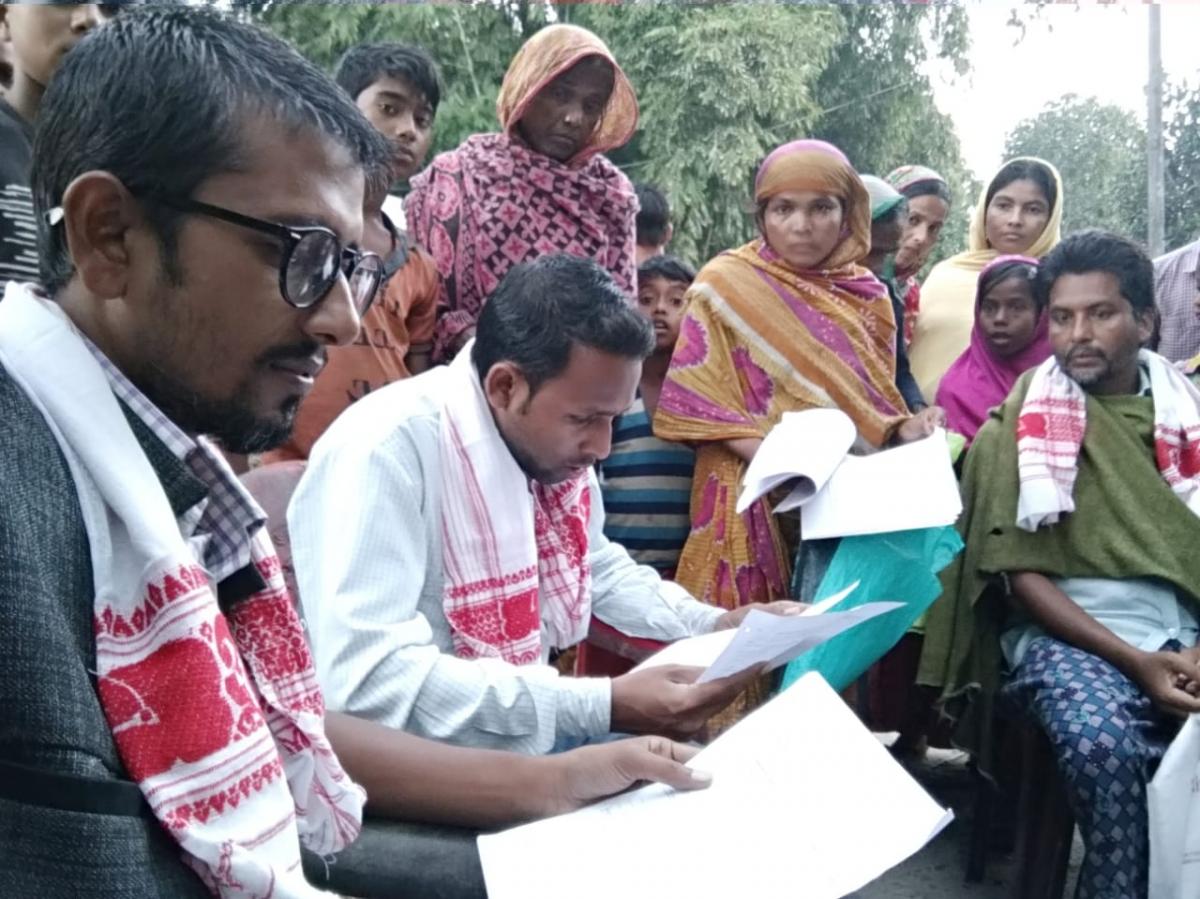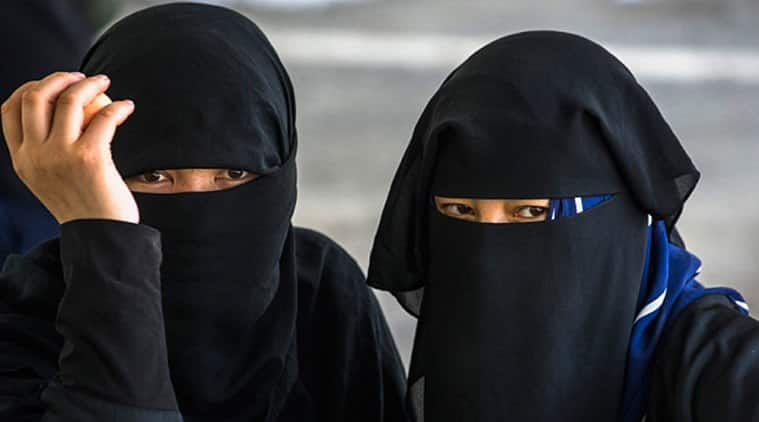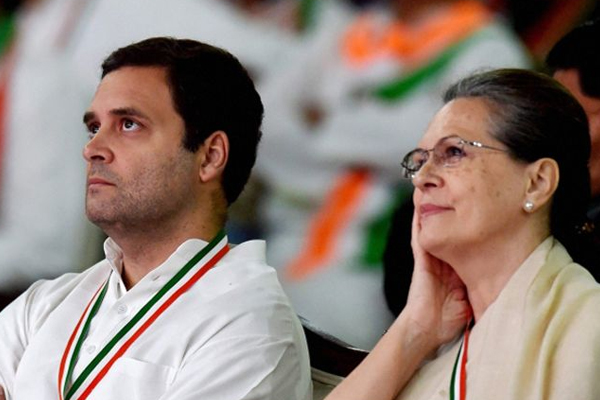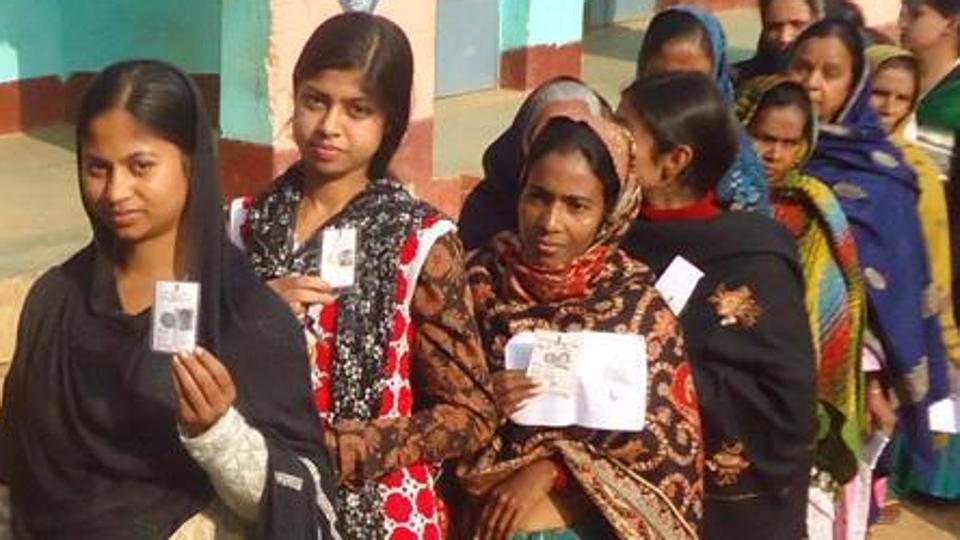Four Jharkhand constituencies are going to polls on Monday, May 6, in what will be the fifth phase of the Lok Sabha elections, and the second leg for Jharkhand. The state first held Lok Sabha polls on Monday, April 29.

The constituencies going to vote on Monday are Hazaribagh, Khunti, Kodarma, and Ranchi. A survey conducted by the Association of Democratic Reforms (ADR), which polled around 7,000 respondents across all of Jharkhand’s 14 constituencies, found that improved employment opportunities, improved hospitals and primary health centres, and better law and order/policing were the top three priorities for voters in the state. The government’s performance regarding these three priorities was rated as below average.
Notably, the survey found that the highest proportion of respondents said that a candidate’s party was the most significant when voting: 30% said the party was very important, and 48% said it was important.
In Jharkhand, the Congress is in an alliance with the Jharkhand Vikas Manch (JVM) and the Jharkhand Mukti Morcha (JMM). Meanwhile, the Bharatiya Janata Party (BJP) is contesting 13 of the 14 parliamentary seats, with the All Jharkhand Students Union (AJSU) contesting one.
Hazaribagh is the constituency of former Finance Minister Yashwant Sinha, who won from there in 1998, 1999, and in the 2009. The sitting MP from Hazaribagh is Jayant Sinha of the BJP, Yashwant Sinha’s son, and also the Union Minister of state for Civil Aviation. Per analysis by ADR, Sinha is the wealthiest candidate in phase five the Lok Sabha elections, having declared total assets worth Rs. 77.07 crore. Hazaribagh is seeing a triangular contest, with Sinha up against Gopal Sahu from the Congress, and Bhubneshwar Prasad Mehta of the CPI, who has previously served as MP from Hazaribagh, which is a BJP stronghold.
Notably, Jayant Sinha sparked an outcry in July 2018 when he garlanded eight people who had been convicted by a lower court of lynching Alimuddin Ansari in June 2017 in Ramgarh, Jharkhand. In fact, The Quint found that Sinha and the BJP also supplied financial and legal help to the accused, citing an interview Sinha did with BBC Hindi in which he mentioned how the BJP helped them secure bail.
In March 2019, the Ranchi district administration filed a case against Sinha for violating the Election Model Code of Conduct after he allegedly publicised the BJP government’s achievements at a degree ceremony at IIM-Ranchi.
The Hazaribagh constituency encompasses the entire Ramgarh district and areas of the Hazaribagh district. Per the 2011 census, the Hazaribagh district is home to nearly 17.34 lakh people, 58.41% of whom are literate, FirstPost reported. Ramgarh is home to 9.49 lakh people. Two lakh people in the district belong to Scheduled Castes.
Notably, days before the election, ANI highlighted the extreme pollution that villagers living outside Hazaribagh in Jharkhand face, stating, “The situation is alarming due to a huge amount of dust and toxic gases emitting from the mines,” and noting that according to local residents, the pollution is causing deaths.
The Kodarma constituency covers the Kodarma district and areas in the Giridih and Hazaribagh districts. Around 15% of the people living in Kodarma belong to Scheduled Tribes, while over 80% of the population in the Hazaribagh district follow Hinduism, per FirstPost. According to the 2011 census, 13.31% of the population in Giridih belongs to Scheduled Castes, and 9.74% belongs to Scheduled Tribes.
Kodarma’s current MP is Ravindra Kumar Rai of the BJP. The party has fielded Annapurna Devi, who only joined the BJP in late March, just a day after the Congress-led grand alliance finalised its seat-sharing plan in Jharkhand, India Today reported; she was previously president of the Jharkhand Rashtriya Janata Dal (RJD).
Annapurna Devi is contesting against Babulal Marandi of JVM-Prajatantrik, which is part of the grand alliance in Jharkhand. He has previously won three times from Koderma, per the Times of India. Marandi served as Jharkhand’s first Chief Minister, but, per the Times of India, he has “been fighting to stay relevant” after losing heavily from Dumka in 2014, and after six JVM legislators defected to the BJP following Jharkhand’s 2014 assembly elections.
Interestingly, India Today noted that in January 2019, Marandi and Annapurna Devi in fact appeared together at JVM meeting, with the latter “lambasting the National Democratic Alliance (NDA) government in Jharkhand and at the Centre.”
Rajkumar Yadav of the Communist Party of India (Marxist-Leninist) (CPI-ML) is also contesting out of Kodarma, making this a three-way race. Yadav is an MLA from Dhanwar, “and his votes increase substantially with every election that he faces,” NewsClick noted, opining that “His candidature on the Koderma Lok Sabha seat is so strong that the ruling Bharatiya Janata Party (BJP) had to deny a ticket to its sitting MP, Ravindra Rai, who had also served as BJP state president in 2014 and helped the party win 12 out of 14 seats in Jharkhand.” UNI reported that RJD leader Subhash Yadav announced that the party would back Rajkumar Yadav in Koderma.
In the Ranchi constituency, per the Hindustan Times, the Congress is banking on Subodh Kant Sahay, who won the seat in 2004 and 2009, before being defeated by Ram Tahal Choudhary of the BJP in 2014. The BJP has fielded Sanjay Seth this time around, and Sanjay Pandey of the All India Trinamool Congress (AITC) will also be contesting, as will Choudhary, as an independent candidate.
The Wire noted that Choudhary is a leader of the Kurmi caste, which falls under the Other Backward Classes (OBC) category, stating, “His community will play a decisive role in the election.” Citing a report, it said that the Ranchi constituency has six lakh Kurmi voters, almost 35% of the total population. The Wire also highlighted that Kurmis have sought to be classified as Scheduled Tribe, and that a part of the community has pledged to vote against the BJP, given that this demand has not been met. Seth of the BJP appeals to urban voters, but with most assembly segments in Ranchi in rural areas, “it is likely that Choudhary will mainly eat into Seth’s vote, helping Sahay,” The Wire opined.
The Ranchi constituency includes areas of the Ranchi and Seraikela Kharsawan districts, with the latter coming under the Backward Regions Grant Fund Programme, per FirstPost. According to the 2011 census, more than 60% of the population of Seraikela Kharsawan is engaged in the primary sector, i.e. agriculture, FirstPost noted. The Ranchi district has a significant Muslim population, comprising nearly 29% of the total population, of which 51.3% are Hindus.
A report from The Wire paints a damning picture of life for the poorest in the Ranchi city, who live in Pahadi Tola, at the centre of Jharkhand’s capital. “Without decent living conditions, the families stay amidst dumps of city-waste and sewage residuals, in shanty houses that blow away in rain,” it described. Access to food is hampered by “a creaky social security system, and lack of measures to safeguard entitlements,” The Wire reported, outlining how those reliant on government food aid are ignored or overlooked, and highlighting that Jharkhand has seen 18 starvation deaths between September 2017 and early January 2019. Moreover, the Pahadi Tola slum also lacks key health and nutritional amenities, particularly those that serve mothers and infants, The Wire noted.
The Khunti constituency is reserved for candidates from Scheduled Tribes, and encompasses the Khunti and Simdega districts, as well as parts of the Ranchi and Seraikela Kharsawan districts. The Khunti district is known for being the birthplace of freedom fighter Birsa Munda, who was borth in the erstwhile Bengal Presidency in 1875. The constituency’s population has a majority of Christians and Scheduled Tribes–64%, per the Hindustan Times.
Khunti has been a BJP stronghold since 1989, per the Hindustan Times, and Karia Munda of the BJP has won eight times from the seat. However, this time around, the BJP has fielded three-time former Jharkhand chief minister Arjun Munda, who has also served in the Lok Sabha. Meanwhile, the Congress has fielded Kalicharan Munda, who belongs to the same Munda tribe as Arjun Munda. The former’s younger brother, Neelkant Singh Munda, is a minister in the current BJP government.
Only 6.68% of the population in the Khunti constituency is urban, with 93.32% of the population living in rural areas, per India Today. Citing political experts, the Hindustan Times noted several economic and social factors that could hamper the BJP’s ability to win in Khunti this year, citing experts who highlighted extreme underdevelopment, and also noted the Christian population’s displeasure over an anti-conversion law.
Most significantly, Khunti is the epicentre of the recent Pathalgadi movement, which was born out of a two-year agitation by Adivasis who were protesting the government’s proposal to establish land acquisition laws and state domicile eligibility that Adivasi activists considered as infringing on their land rights, The Wire reported. The movement garnered a wave of support from Adivasi villagers all over Jharkhand, and particularly in the Khunti district, who declared the gram sabha as the sovereign authority. They employed the ritual of Pathalgadi, which involves installing a memorial stone on a grave, to lay multiple stones quoting constitutional provisions “to declare their gram sabhas as sovereign,” The Wire said. The movement faced severe repression from the state and police machinery, with as many as 150 named and several thousand unnamed FIRs. Many still face charges of sedition; in July 2018, the state police charged 20 senior activists with sedition for social media posts criticising the government, and allegedly being prominently involved in the Pathalgadi movement, The Wire noted. In early April, DownToEarth reported that 30 villages in the Khunti district announced that they would not vote in the Lok Sabha elections, with a local activist saying that the were afraid the government would harm them if they stepped out.
In fact, as recently as Wednesday, May 1, the National Herald reported that police picked up five young men from the Dadagama village and Chandidi in Khunti, and were locked up in jail on the night of April 27. The eldest man, Basingh Hasa, told the National Herald that three of them were detained because the police said they had information that three men were asking people not to vote, and the other two were picked up in connection with a murder case. Basingh opined that the group was being intimidated because they were “known to support Guruji,” or JMM chief Shibu Soren. Rughu Munda, who was detained in relation to a murder, said, “All of this is because of the pathalgadi movement. The neighbouring Ghagra village was involved in Pathalgadi, but we didn’t put a plaque because several of them were picked up. We were afraid. We thought we would do it two weeks after they had, but the fear of the police and the state made us think otherwise”.
